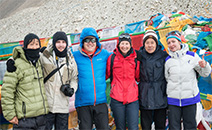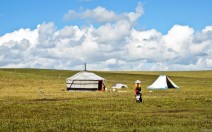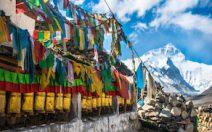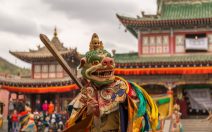Kanbula National Park, in Tibetan its called Kamra. Located in west of Chentsa county in Huangnan Tibetan Autonomous Prefecture, 131km from the provincial capital city of Xining, covering an area of 152 sq km and the park is famous for its unique land formation, red rocks, forest, vegetation, soaring peaks, and Tibetan temples are the main feature of the park.
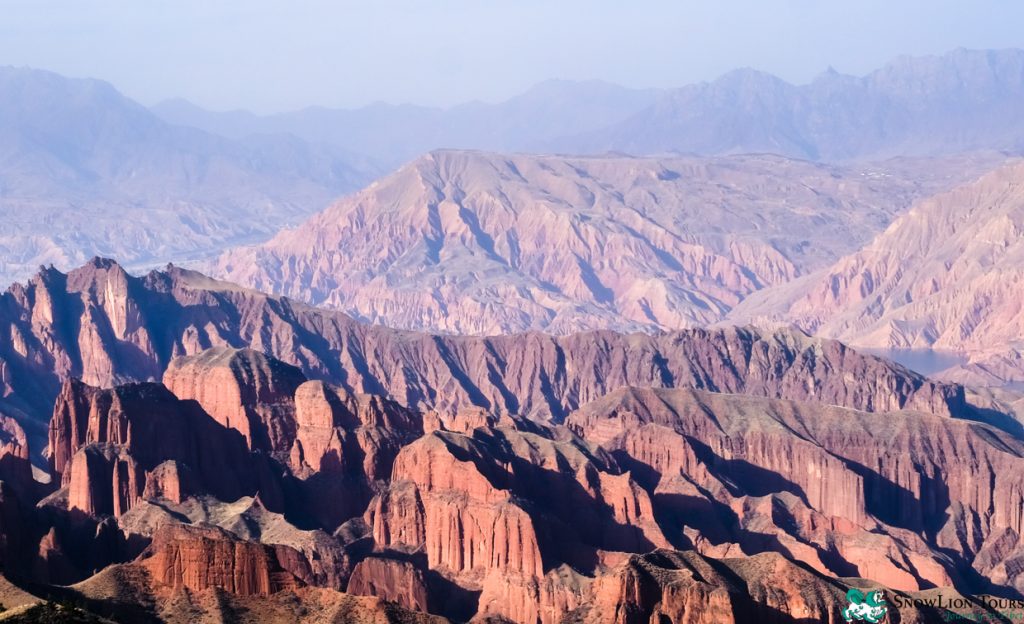
Red Mountains inside Kanbula National Park
Kanbula or Kamra national park is connected to the yellow river from the north and the yellow river also created one of the largest hydroelectric construction project on the Tibetan plateau. Approximately 60% of the Kanbula park is virgin forest, there are 276 species of plants and trees, including pine tree, cypress, and birch.
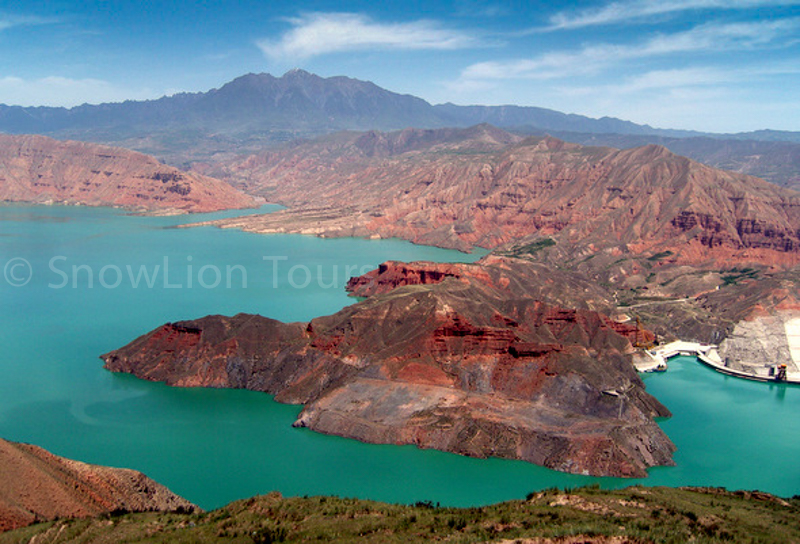
Kanbula National Park – view from the top of mountain
The park is characterized by its spectacular mountain peaks, the center peak called Namdzong 2000m high from sea level, around of Namdzong, there are 18 identifiable peaks, among these, the highest group of six are revered as snow white abodes of gods. Gopodzong, Nepodzong, Bashingdzong, Trichdzong, Jomodzong, and Ngadzong.
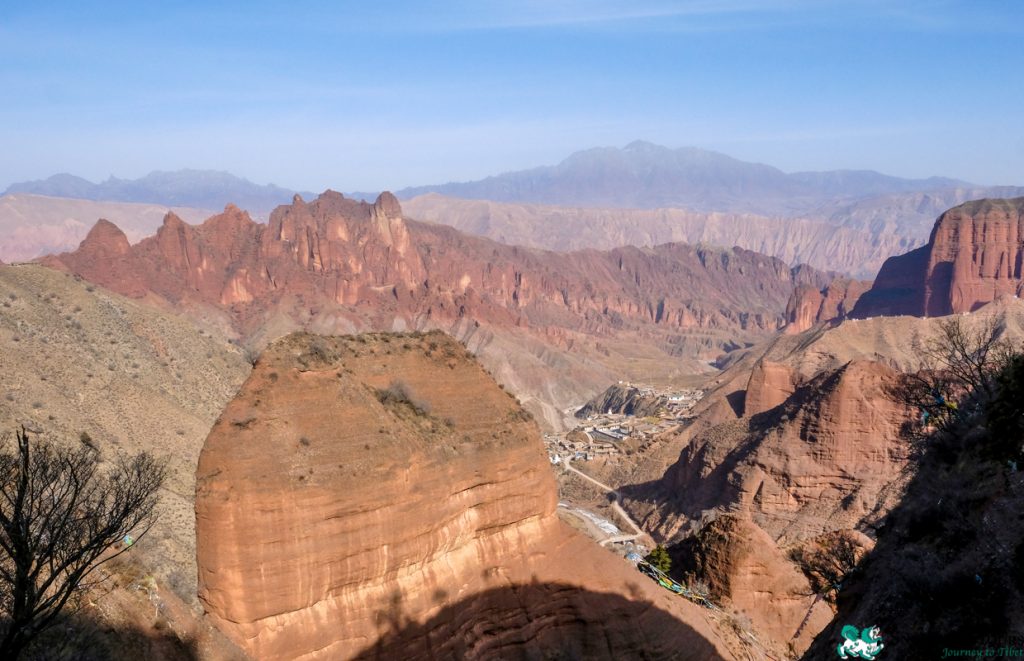
Kanbula National Park Landscape
The middle group of six are known as red rock abodes of the haunting spirits, Razhudzong, Gonpodzong, Lamtrengdzong, Tadzong, Degyedzong, Lugdzong. And the lower group of six are known as the verdant abodes of the serpentine of water spirits. Mukpodzon, Nordzong, Shadzong, Radzong, Sermodzong, and Zordzong.
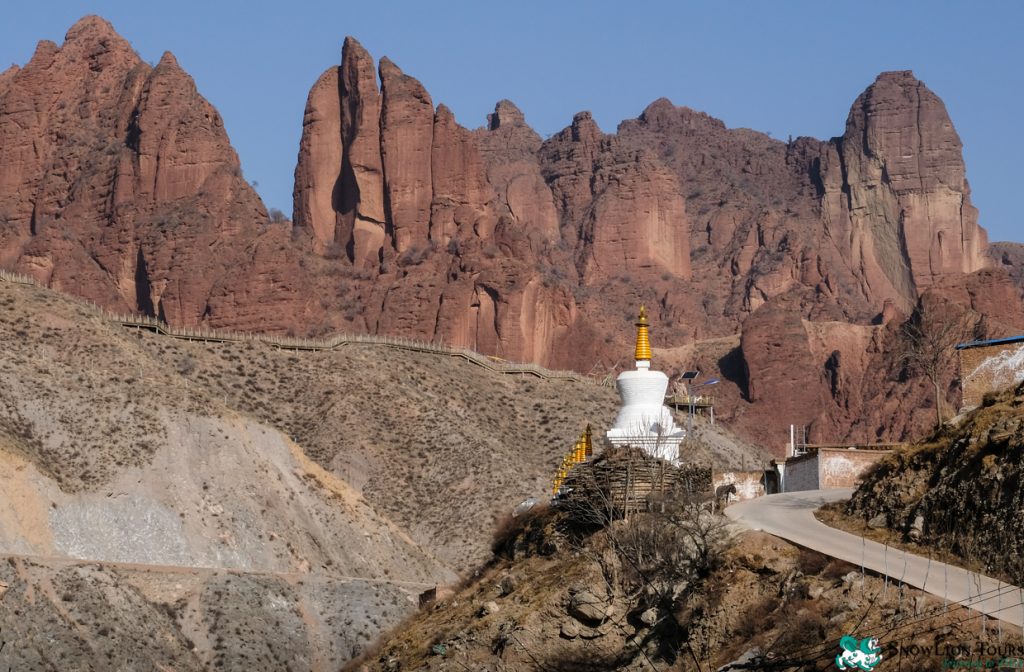
White Stupa at the Achung Namdzong Nunnery in Kanbula Park.
Achung Namdzong
Achung Namdzong is revered as one of the 25 important power places of Kham and Amdo, specifically symbolizing the mind aspect of Buddha mind. During persecution of Buddhism in Central Tibet by the last king of Tibet, the three high scholars fled from Lhasa to Amdo and stayed in the caves at Achung Namdzong for 20 year.
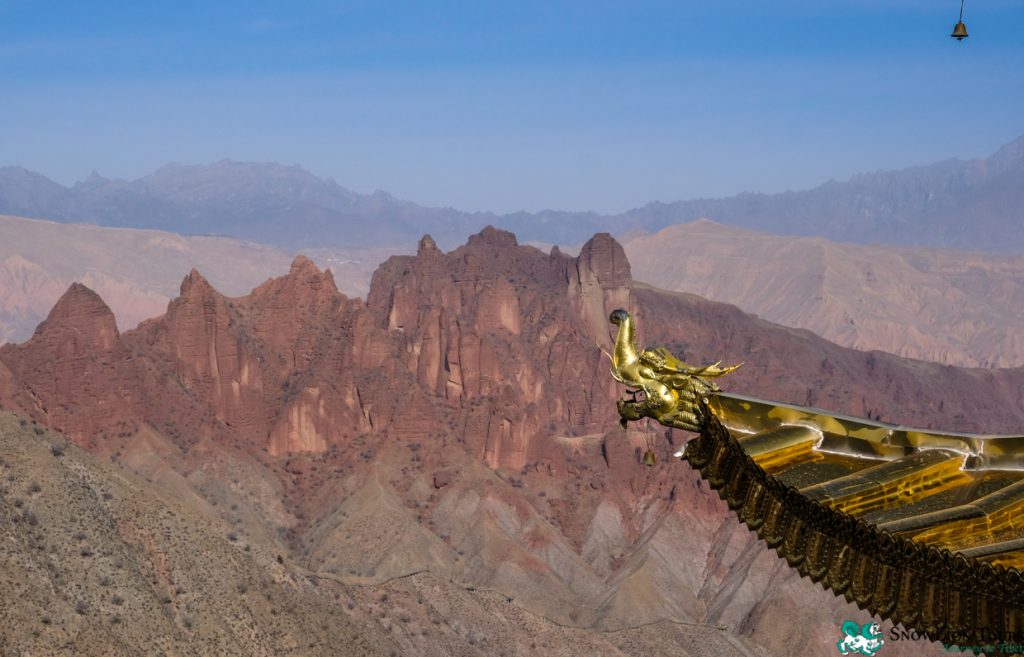
Kanbula National Park view
In late centuries, Achung Namdzong was visited by most of the important Nyingmapa masters from all over Tibet.
Four monasteries are built around the Achung Namdzong because of its land features and power.
Achung Namdzong Samten Chopeling Nunnery
Achung Namdzong nunnery was founded by Gurong Natsok Rangdol in 1710, originally it was the main place where a famous meditation practitioner called Yeshi Dolma took life time practition here in Achung Namdzong. This nunnery became the most important Nyingmapa school in Amdo, visited by many Dzogchen masters in Kham and Amdo.
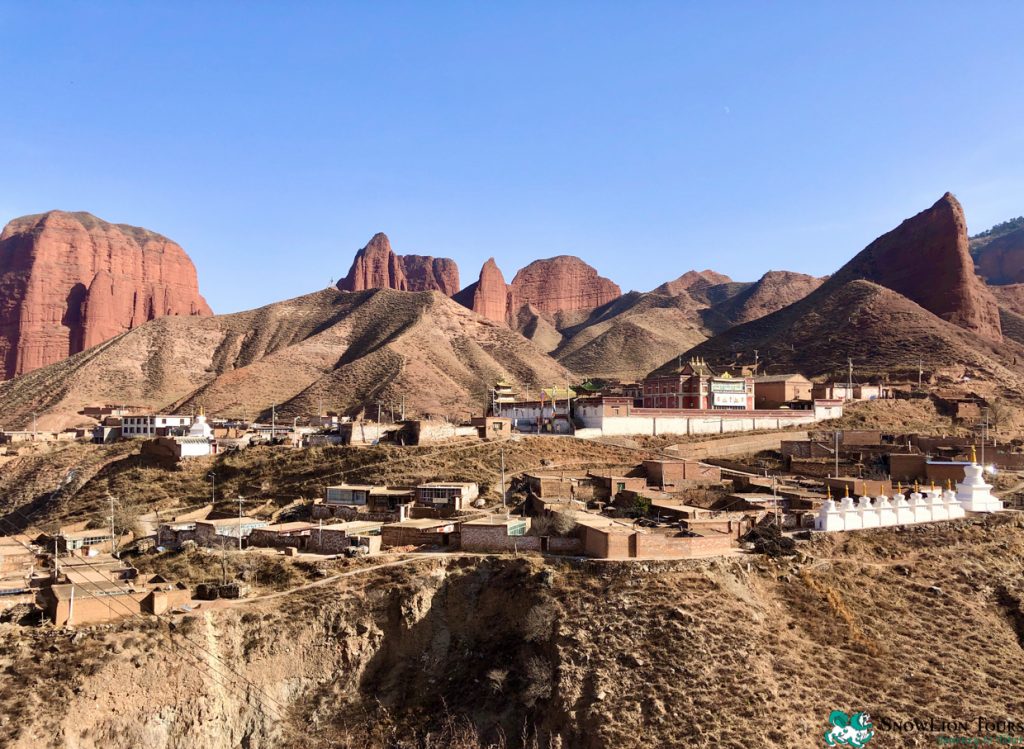
Achung Namdzong Nunnery
The nunnery has a large stupa in front of the main temple and eight small stupas symbolizing the major events in the life of Shakyamuni Buddha. The main temple contains images of Padmakara and his two consorts, along with Manjughosa and Tara. The murals depict the 35 confession Buddhas, 16 elders and Longchen Nyingtig lineage.
Namdzong Tse or Dzatro Dorjeling
The temple at the roof of Namdzong Tse was originally founded in 1913, it functioned as an important hermitage for Nyingma practice. The caves of three monks are also located at Namdzong Tse, there are traces of original murals. Nowadays it accessible by newly built wooden ladders on the north side of the hill all the way to top.
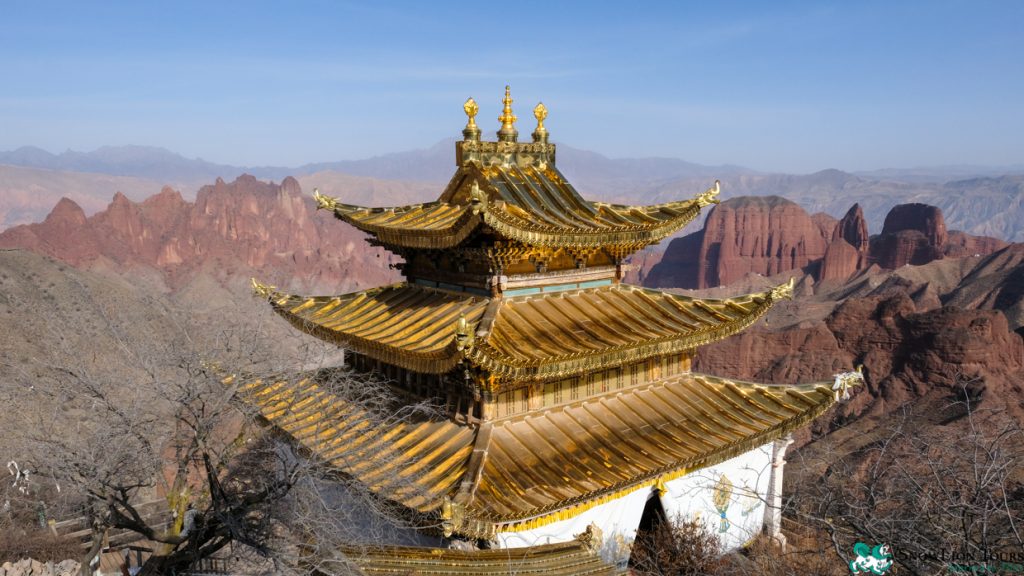
The view from Meditation caves on top of one peak at the Namdzong nunnery.
Namdzong Ngakkhang
Namdzong Ngakkhang is a temple located about 800m inside the valley. This Nagkhang is consist of Assembly Hall, protector hall, and Tara Hall. Unlike the other monasteries you typically see in Tibet, this is a temple for Ngakpas or Yogis with long hair rolling on the head. Ngakpas are lay people who practice and perform rituals in the auspicious days of each month. Othertimes, they are rising families and live same as normal people. They are an unique group that belongs to Nyingma sect of Tibetan Buddhism.
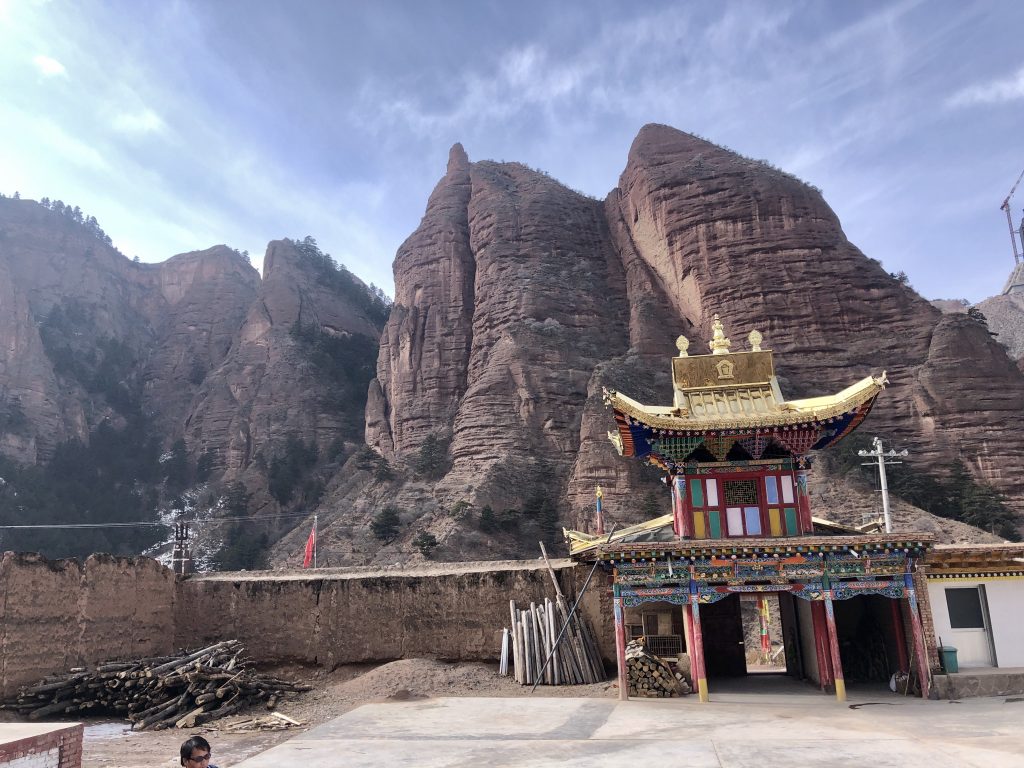
Namdzong Ngakkhang
This is one of the best day trip from Xining or make a small detour on the way to Tongren / Rebkong from Xining.
Travel info about Namdzong Nunnery, please click here…
